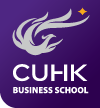Paying for a Chance to Save Money:Two-Part Tariffs in Name-Your-Own-Price Markets

Paying for a Chance to Save Money:Two-Part Tariffs in Name-Your-Own-Price Markets
We examine the profitability of two-part tariffs in name-your-own-price (NYOP) markets using incentive-compatible laboratory experiments. An NYOP seller who uses a two-part tariff charges an upfront non-refundable bidding fee akin to an entrance fee into his store. We find two-part tariffs can be profitable to NYOP sellers, and we identify a strong moderator of this profitability: a decision aid that calculates the payoff consequences of candidate bids. To compare the profitability of two-part tariffs with that of other profit-enhancing strategies proposed in the literature, as well as to interpret the effect of our decision-aid manipulation, we propose and estimate at the individual level a model of entry and bidding that nests both Expected Utility Theory and Prospect Theory as special cases. Counterfactual simulations based on the estimated model reveal two-part tariffs outperform the minimum-bid strategy, and the optimal bidding fee depends on the presence of our decision aid and on subjects’ experience with our bidding task. We estimate that optimal two-part tariffs can increase NYOP seller profits by about 9% in the long run.

